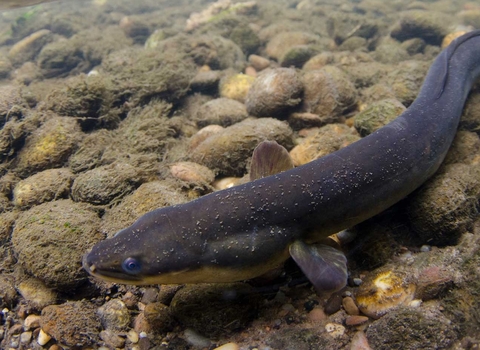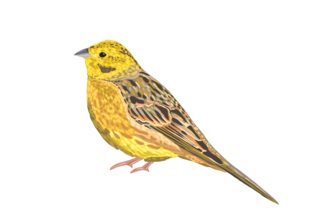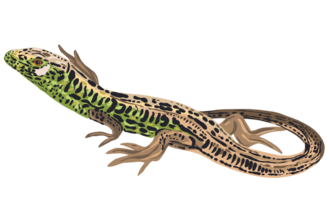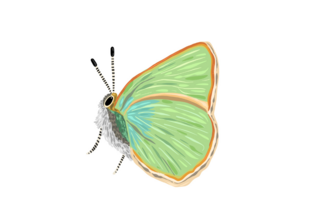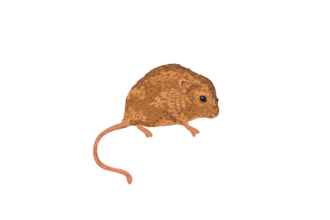Arguably the most mysterious and fascinating fish in the UK, European Eels may be slippery but their life stories are stupendous.
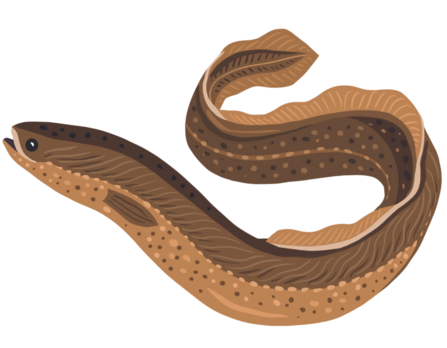
Bea Baranowska Illustrations
When the juveniles (known as elvers) arrive in our estuaries in spring, they’ve already travelled over 6,000 kms from the Sargasso Sea, an area of the western Atlantic near Bermuda. A journey that takes up to two years as they drift on ocean currents, incurring huge losses from human and natural predation, they then make their way upriver and begin life afresh in our rivers and canals, and even lakes and ponds (which they reach by wriggling overground in wet weather). Here they feed on other fish, invertebrates and frankly almost anything that moves.
When males are between six to 12 years old and females nine to 20 (at which point some specimens may be over a metre long), they begin their lengthy journey back to Sargasso, where they spawn and expire, beginning the cycle anew. Some land-locked individuals never make the trip, however, and these 4-foot-plus monsters can live for 50 years.
Why they matter
Surrey’s waterways have historically been rich in Eels due to their relative proximity to the Thames Estuary, but due to overfishing, pollution and man-made barriers such as weirs across migration routes, numbers Europe-wide have declined by 95 per cent since the 1980s, giving the species a Critically Endangered rating. While still present across Surrey, the current population sadly reflects this catastrophe.
This matters for several reasons. Firstly, European Eels have evolved to be a part of the ecosystem that sustains us all for over three million years. What right have we to obliterate such an impressive and tenacious species? Secondly, as a predatory species Eels are a vital indicator of the wider bio-abundance and biodiversity of our waterways. If they are permitted to vanish, what could be next? And thirdly, Eels themselves have their predators in the local food chain. Otters, Herons and Pike consume the adults, while the tiny elvers are food for a huge range of birds and fish, from Brown Trout and Perch to Kingfishers.
How we're helping
We deliver nature-based solutions, river restoration and monitoring across the county, including on both the River Wey and River Mole catchments. We also help to lobby the government and water companies alike to up their game on pollution and over-abstraction. All this work depends on the collaboration of local volunteers, landowners, catchment partnerships, and multiple organisations and businesses - and we all need to take much more action if the appalling current condition of our rivers is to be addressed. That’s why Surrey Wildlife Trust’s new Wetlands Strategy proposes to create a Surrey that is rich in wetland habitats and species, and remains resilient to man-made pressures.
Specific action we have taken to assist European Eels and the wildlife that shares their habitat includes river restoration on the Chertsy Bourne, the Tillingbourne and the Pipp Brook. We want to do much more of this work, and we need your support to do so.
Other species in need
The decline of species like the Nightingale, Yellowhammer, and European Eel is not just a concern – it’s a call to action. These iconic creatures, along with others like the Harvest Mouse and hairstreak butterflies, need our help to thrive once again in their natural habitats. To find out more about each of these species and how we're helping them, click below.

